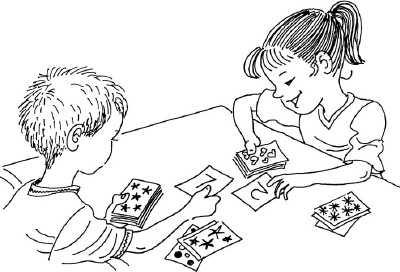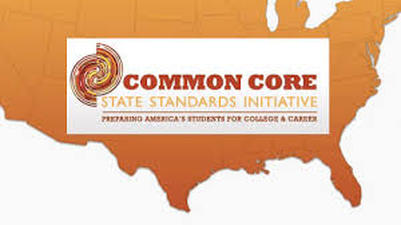|
April is Poetry Month! Many students are less than enthusiastic when they are on the cusp of starting the poetry unit in their language arts class, but many students are excited. Students that are not excited see it as a daunting task, while students that are excited see it as the perfect opportunity for them to express themselves with limited writing rules. I was always a part of the group of students that dreaded poetry. In fact, I have the image of the poetry book we used in high school, Sound & Sense by Laurence Perrine, seared into my memory. It was not a fun time for me. I didn't like it, had difficulty writing it, and even more difficulty interpreting it. However, that all changed when I became a teacher and was on “the other side" of this creative form of expression. I attended a conference and one of the sessions I selected was about poetry. The woman who presented was amazing! She convinced everyone in the room that we are all poets. She had us complete two short poetry assignments during the session, and I surprised myself at what I created. I was hooked. I decided to use what I had learned at the conference in my classroom and my students experienced similar success. In honor of poetry month, I am going to write two different types of poems each week. At the end of April, I will have penned eight different original poems, and I will post them here each week. Below is the first of the two poems for week one.  Haiku Springtime has arrived Birds, green grass, pollen, and rain Allergies galore
0 Comments
Learning basic math facts will always be a part of every child’s life. It's a vital component of having a solid foundation for success with higher level math skills. During my elementary school days, students relied heavily on flash cards and daily repetition via math facts quizzes/tests in order to become proficient. Even today, I vividly recall taking math facts tests everyday in Mrs. Smiley’s 2nd grade class. It proved to be an effective method for learning the facts. I even remember her teaching us how to fold the manila paper into sixteen rectangles (where we would write each problem and its answer as she recited them).
During my years as a full-time fourth grade teacher, I saw a handful of students each year that would struggle with learning basic facts. It seemed as if by the time students had reached fourth grade they would know most of the facts “by heart”. However, that was not the case for some students. During my Back to School Night presentation each year, I suggested that parents have their child practice basic facts a little bit each night (10-15 minutes). I also informed my class on the first day of school each year that having a firm grasp of basic math facts would help them tremendously as the year progressed, and we encountered more challenging concepts. Not everyone heeded my advice. My goal for each student was to have them achieve what I called “instant recall” (aka math fluency in educational jargon) of basic math facts for addition, subtraction, multiplication and division. Meaning they should be able to answer within two seconds. Based upon their in-class and homework assignments I was aware of which students were not practicing at home. So, I decided to implement a plan to offset their lack of extra practice. I used a two pronged approach. I used an old school method, Mad Minute, to begin every math lesson. I also created homework assignments via www.thatquiz.org for them to complete. It was essentially the same as the Mad Minute they completed in class (only it was online). It is very easy to set up. I selected the number of facts and set the timer to stop after one minute (after one minute, the assignment ended regardless of how many problems were completed). I started with 20 problems. Then gradually moved to 30, 40, 50 and finally 60. The kids really enjoyed it! It was a different twist on what they did in class and it involved a tool that is now a part of the daily life of most students. One of the best features about the online assignments was that it was automatically graded when they finished. In addition, since I created a class list on the website, I was able to log in later that night to see if everyone had completed the assignment. It was very helpful, and several students made marked improvement. There are numerous websites students can visit for basic fact practice, but there are also some games that don’t involve a computer that students can play. Below are two such games that former students of mine enjoyed playing. I have also added a link to a website that has fun games for students to play to practice their basic facts. 1. Multiplication War (played with a standard deck of cards) 2. SKUNK - best played with standard dice, you can also use a standard deck of playing cards, to make it more challenging you can use 12, 15, 20, and 30 sided dice 3. www.multiplication.com Please see the "Websites" page under the "Resources" tab on our website for more great websites for math. There are also websites for science, language arts, social studies, and logical/critical thinking.  Have you ever felt overwhelmed at home or at work? Does it always seem like there just aren’t enough hours in the workday to get everything accomplished? This is something that teachers encounter on a daily basis during each school year. Teachers have a lot to think about and do over the course of a school year; planning lessons, teaching lessons, grading papers, conflict resolution, and returning calls/e-mails from parents are just a few. One thing that many teachers may overlook is finding ways to save time, so each day runs as smoothly as possible. In education (especially at the elementary level), there is rarely a day that goes exactly as planned. so saving a few minutes here and there will allow teachers more time to devote to higher priority tasks on their to do list. Based on my experience as a teacher, here are 7 ways teachers can save time on a daily basis and avoid becoming overwhelmed with “things to do”: 1. Get to work early - Not everyone is a morning person, but trust me this is an awesome way to save time. I used to arrive at work between 1.5 - 2.0 hours before the school day started. During this time, one can be extremely productive. It is quiet and most likely you will be the only one there! This enabled me to get a lot done without interruptions. Teachers are constantly interrupted during the day with students coming in to ask questions, colleagues and administrators stopping by, issues on the playground, etc. 2. Create a paperless classroom (for as many assignments as possible) - Google Docs is a great way to reduce the amount of paper used in a classroom. This can definitely be advantageous for Language Arts (research papers, short writing assignments, group projects, etc). It will eliminate students from using the “I lost it” excuse and will also be much easier for you to keep students’ assignments organized. Most of all, having everything saved securely on Google Drive Cloud means that you can access your work from anywhere on any computer by simply signing into your Google account. In addition to Google Docs, these three tools on Google Drive would be most useful in the classroom:
3. Keep your desk organized - Don’t use your desk as a temporary landing spot for papers, books, etc. You may have good intentions regarding putting it where it belongs, but if it is not addressed immediately your desk can become cluttered with miscellaneous items. 4. Keep your computer desktop organized - Spending chunks of time searching for documents on your computer can add up over time (even if you use your Operating system’s search feature). Make folders for everything you have (you may even need to make folders within folders). Label each folder so you can quickly find what you need. 5. Organize your classroom and keep it that way - Designate a place for everything: completed homework, completed in-class assignments, rulers, markers, crayons, classroom library, resource books, printer paper, lined paper, extra pencils, etc. Do the same for your desk drawers. If you are teaching elementary school, stipulate that each student keep their belongings in their cubbies. You may want to use TeacherKit. It is one of several apps for teachers to help with day-to-day management (e.g. attendance, seating charts, behavior notes). 6. Share responsibilities - Don’t try to do everything yourself; be it an Assistant, Intern or a Parent Volunteer a couple of times per week. If you need help, ASK. When I taught 4th grade, my 4th grade colleague, the 4th grade Intern and I worked very well as a team. Our goal was to be as efficient as possible. Each of us shared the load and helped each other when needed. Also, if you have a designated day when members of the PSA (Parent Support Association) or PTSA (Parent Teacher Student Association) volunteer to help teachers complete tasks, set aside projects for them to complete for you. Be sure you give them detailed instructions regarding what needs to be done. 7. Ask for help from your students - This mainly applies to elementary school teachers who teach grades 2 through 4. Ask students if they would like to help you file papers, clean desks, organize bookshelves, empty recycling and trash bins, clean dry erase boards, sharpen pencils, etc. I had a former 4th grade student, that enjoyed keeping the bookshelves in the classroom neat and orderly and another that liked to help me file completed assignments. If you ask, you might be surprised how many student will gladly help you. 8. Have students write homework assignments as soon as they enter the room - I found this to be very helpful. I designated 3 minutes every morning for students to write their homework assignments in their planner. I was fortunate to work at a school that had SMART Board interactive whiteboards in each classroom, so I had it on the screen as they entered the classroom. By doing so, it virtually eliminated students “forgetting” to write their assignment. I found it to work much better than at the end of the day. The end of the school day brings about boundless energy and students are keenly focused on being “released”. Writing homework assignments and making sure they have all of the materials needed to complete their homework is not at the forefront of their minds at this particular time. Time management is a topic that is not often taught in most teacher certification programs. Teachers have just as many, if not more, tasks to juggle each day than the average corporate employee. When setting up your classroom during the few weeks before the first day of school, take some time to think about how you can save time. You may need to modify your plan based upon your classroom dynamic, but don’t be hesitant to do so. You may need to make adjustments from year to year just as you do with lesson plans, scope and sequence. What time saving tips have you used or continue to use that have proven effective? Click here to read about basic information regarding the Common Core Standards Initiative
|
AuthorRandy Sally Archives
June 2023
Categories
All
|





 RSS Feed
RSS Feed
